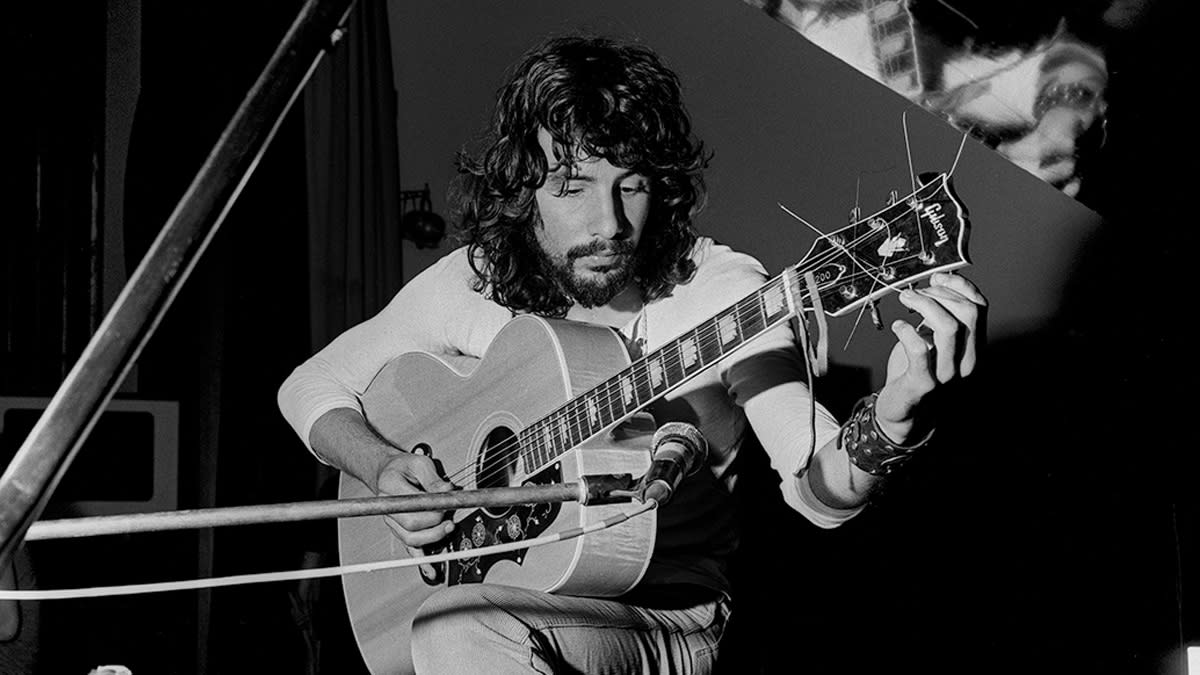How the 1960s Gibson J-200 upset acoustic purists but remained King of the flat-tops in the eyes of the Beatles, Creedence Clearwater Revival and Yusuf/Cat Stevens

Many guitarists argue that behind every great song is a great instrument. To prove their point, they’ll bring up songs recorded with 1958-60 Gibson Les Paul Standard “bursts,” '50s and early '60s Strats and Teles, vintage Gibson and Martin guitars, one-of-a-kind custom guitars (like Jerry Garcia’s Wolf and Tiger) or even modern guitars like EVH, Music Man, PRS, and Taylor models.
If you were to ask even the most casual vintage acoustic guitar collector if the Sixties Gibson J-200 was a great guitar, most would answer with an emphatic “No!” In its original pre-WWII iteration with rosewood back and sides, the Gibson SJ-200/Super Jumbo (as it was originally named) is one of the most desirable acoustics of the 20th century. The post-war version with maple back and sides produced through the Fifties (when the name was shortened to J-200) is not far behind.
But for some unexplainable reason during the early Sixties, Gibson decided to mess up the J-200’s divine design in a huge way by embedding an ABR-1 Tune-o-matic adjustable bridge into an oversized rosewood bridge (screwed to the top, no less) with the previously open sections filled with heavy pearl inlays. (One of my acoustic purist friends compared the '60s J-200 bridge to “painting a huge handlebar mustache on the Mona Lisa then driving a Buick through the middle of it!”)
It now also had a massive maple bridge plate and large wooden brace between the bridge and soundhole that adversely restricted top vibration. The modified neck design featured a narrow fretboard and slim, flat profile similar to a Gibson solidbody electric of that era. How could Gibson president Ted McCarty – the man behind such timeless classics as the Les Paul (!), Flying V, Explorer, ES-335, Firebird, SG and so on – allow such an abomination to happen under his watch?
Acoustic traditionalists may have averted their gaze in disgust, but the J-200’s modifications didn’t matter much to many of the most popular recording artists of the '60s and beyond.
The list of legendary recordings featuring a Sixties J-200 is truly astounding. George Harrison used one with the Beatles on the White Album, Let It Be and Abbey Road on songs that include While My Guitar Gently Weeps and Here Comes the Sun. John Lennon also played Harrison’s J-200 during the Let It Be/Get Back sessions.
Jimmy Page borrowed producer Mickie Most’s J-200 to record Babe I’m Gonna Leave You, Black Mountain Side and Your Time is Gonna Come on Led Zeppelin’s debut album. Bob Dylan famously posed with one on the cover of his Nashville Skyline album and played it on the record. Pete Townshend used his 1968 J-200 on every Who and solo recording he made from 1968 through 1989, most notably on Pinball Wizard.
But wait, there’s more. Brian Jones can be seen playing a '60s J-200 in the Rolling Stones film Sympathy for the Devil; Cat Stevens recorded and performed with a Sixties J-200 during his late '60s/early '70s prime; John Fogerty played his on the Creedence Clearwater Revival classics Cosmo’s Factory, (Lookin’ Out My Back Door) and Green River (the title track); and the '60s J-200 often appeared in the hands of everyone from Gram Parsons to pop sensation Mike Nesmith of the Monkees to Texas country-blues songster Mance Lipscomb.
The '60s J-200’s heavily reinforced and heavy bridge, maple back and sides (often made of laminated materials), and skinny neck combined to deliver a rather percussive tone (i.e. lacking the sustain and rich resonance of previous J-200 models) with pronounced, brilliant treble and subdued bass, but that made it effective in the recording studio for recording bright, aggressive rhythm tracks that cut through the mix.
As Harrison proved on Here Comes the Sun, this bird could also sing quite sweetly when fingerpicked, particularly when using a capo.
